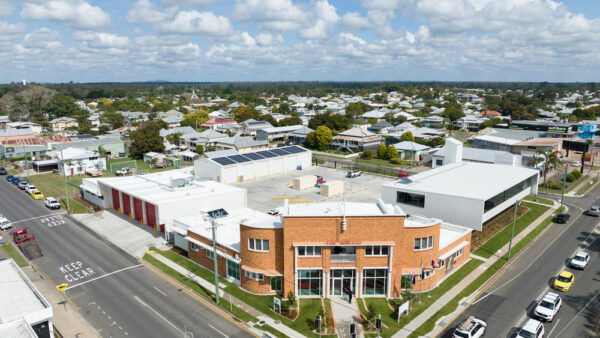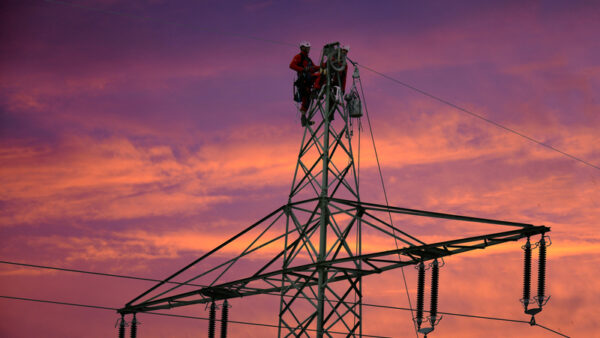The US and Poland agreed this week to cooperate on developing Poland’s civil nuclear programme for the next 30 years.
The first-of-its-kind accord did not commit the US to funding Polish nuclear power, but the topic is under negotiation, according to the Polish side.
Poland has never built a utility-scale reactor, but recently floated plans to invest $40bn in building six reactors over the next 20 years (see further reading). https://www.globalconstructionreview.com/news/poland-goes-nuclear-plan-build-six-reactors-2040/
The agreement sees the pair working together on regulation, research, training, supply chain development, raising public awareness and cooperating on projects in Europe.
The US Department of Energy said the plan was to free Poland from dependence on Russian gas. [https://www.energy.gov/articles/us-secretary-brouillette-and-poland-s-minister-naimski-sign-strategic-agreement-us-poland]
Earlier, President Trump said the US was “committed to securing your access to alternate sources of energy, so Poland and its neighbours are never again held hostage to a single supplier of energy.”Â
Piotr Naimski, Poland’s secretary for strategic energy infrastructure (pictured), said the agreement was about more than security of supply.
“Poland sees this strategic cooperation in a wider context,” he said. “It is about geopolitical security, long-term economic growth, technological advancement, and development of a new industrial sector in Poland.”
The deal may put the US nuclear industry in line for this work, and may signal a new willingness to enter the nuclear export business, presently dominated by Russia, China and South Korea.
Speaking at the signing ceremony, Georgette Mosbacher, the US ambassador to Poland, said the deal was an “announcement to the rest of the world that America is back in the nuclear business, thanks to US cutting-edge technology”.
However, Naimski later commented that the agreement did not “require Poland to choose a specific technology or partner for a nuclear project”. He added that financial details for the new plants were not part of the deal, and construction costs and funding were still subject to negotiation. [https://polandin.com/50449740/choice-of-nuclear-technology-not-imposed-by-polandus-nuclear-deal-official]
Work on Poland’s first reactor is due to begin in 2026 and – all being well – it will enter service in 2033.
Photograph: Piotr Naimski signing the agreement with US Secretary of Energy Dan Brouillette (Government of Poland)
Further reading:Â
Poland goes nuclear with plan to build six reactors by 2040
https://www.globalconstructionreview.com/news/poland-goes-nuclear-plan-build-six-reactors-2040/
Poland announces plan to build first nuclear power station in Pomerania
https://www.globalconstructionreview.com/news/poland-announces-plan-build-first-nuclear-power-st/
Poland eyes 12GW Baltic wind bonanza
https://www.globalconstructionreview.com/news/poland-eyes-12gw-baltic-wind-bonanza/
The US and Poland agreed this week to cooperate on developing Poland’s civil nuclear programme for the next 30 years.
The first-of-its-kind accord did not commit the US to funding Polish nuclear power, but the topic is under negotiation, according to the Polish side.
Poland has never built a utility-scale reactor, but recently floated plans to invest $40bn in building six reactors over the next 20 years (see further reading).
The agreement sees the pair working together on regulation, research, training, supply chain development, raising public awareness and cooperating on projects in Europe.
The US Department of Energy said the plan was to free Poland from dependence on Russian gas.
Earlier, President Trump said the US was “committed to securing your access to alternate sources of energy, so Poland and its neighbours are never again held hostage to a single supplier of energy.”Â
Piotr Naimski, Poland’s secretary for strategic energy infrastructure (pictured), said the agreement was about more than security of supply.
“Poland sees this strategic cooperation in a wider context,” he said. “It is about geopolitical security, long-term economic growth, technological advancement, and development of a new industrial sector in Poland.”
The deal may put the US nuclear industry in line for this work, and may signal a new willingness to enter the nuclear export business, presently dominated by Russia, China and South Korea.
Speaking at the signing ceremony, Georgette Mosbacher, the US ambassador to Poland, said the deal was an “announcement to the rest of the world that America is back in the nuclear business, thanks to US cutting-edge technology”.
However, Naimski later commented that the agreement did not “require Poland to choose a specific technology or partner for a nuclear project”. He added that financial details for the new plants were not part of the deal, and construction costs and funding were still subject to negotiation.
Work on Poland’s first reactor is due to begin in 2026 and – all being well – it will enter service in 2033.
Photograph: Piotr Naimski signing the agreement with US Secretary of Energy Dan Brouillette (Government of Poland)
Further reading:Â






